| Issue #151 • January/February, 2015 |
A few years back, I caught myself becoming a bit frustrated with my compost pile. It seemed that I just couldn’t produce compost as easily as I’d seen others do. Videos, blog posts, gardening magazines everyone seemed to have the same mantra: “Put it in a pile and let it happen!” So that’s what I did … but with less than stellar results.
I’d been combining most of my kitchen and garden waste with straw bedding from my chicken coop in a standard mounded pile on the ground and covering it with an old tarp. I’d spray the pile with water and turn it weekly to ensure a good composting process started and continued, or so I thought. As the weeks and subsequent months passed, I found that while I was making some compost, it was only a very small amount and it was taking much longer than I expected.
Since I live in the desert, I figured that the moisture element (or the lack thereof) was the bulk of my composting failure. Not to mention, turning the pile in 100° F and higher heat didn’t happen as often as it should have. With that realization in hand, I figured a DIY compost tumbler was my solution. It would contain the moisture better and provide an easier method of turning the compost. Seeing as I already had a 55-gallon barrel, I figured the project was already halfway complete. With a couple hours of work and a quick trip to the hardware store, I had a beautiful blue composter sitting in my garden just waiting for a meal of garden waste and chicken poop!
Now, fast-forward about two years to the writing of this article. I can say that I’ve used this compost tumbler with really great results. Composting times have ranged from as quickly as 5-6 weeks in the summer to 2-4 months in the winter for nicely broken-down compost. My moisture issues have been remedied and on top of it all, the act of collecting the compost is super easy. The barrel can be emptied into a standard wheelbarrow when placed in the horizontal position due to the elevated frame.
Materials list:
55-gallon barrel: $0-$25
1.5″ diameter galvanized pipe: $0 on Craigslist
two 2×6″ boards (8-ft. and 10-ft.): $11
assorted screws and nails: $2
PVC airflow assembly (18″ length, cap, threaded/smooth adapter and coupling): $5
linseed oil or other protectant: $2

The frame
To start, you’ll first need to build the frame on which the barrel will tumble. Cut your 2×6 boards into: two 35″ upright pieces, two 34″ foot pieces and two 29″ spacer pieces. After the boards are cut, you can now choose to “dress” up these pieces by adding 45-degree angled cuts on the 34″ and 35″ pieces as shown on the cut sheet. These cuts aren’t necessary, but they do add a degree of finish to the project. Once the cosmetic cuts are finished, drill 1.5″ holes at the top of the 35″ pieces as shown on the cut sheet. A doorknob drill set will work fine for these holes. After all cuts and holes have been made, I recommend treating the wood with a protectant. I used boiled linseed oil on both of my composters, but use what you are comfortable with and what works best in your environment.
Once the wood has been treated, you can begin assembling the pieces as shown in the pictures. The 35″ vertical uprights will attach to the 34″ horizontal footers first, with the 29″ spacers connecting the two halves second. Ideally, screws would be the best option when connecting the pieces, but I use nails as well to save on the more expensive screws. Just remember to pre-drill to prevent splitting.

Drilling hole through the board and pipe for the “nail stop” to be added
The barrel
If you want to start off on the right foot, I recommend that you acquire a 55-gallon barrel with a removable lid with a locking ring. It’ll cost a bit more than a standard barrel, but will provide much better access to the finished compost and will save you from having to cut and make a hinged access door.
For the main functions of the tumbler, you’ll need to drill three 1.5″ holes in your barrel for the axle/pipe and for the PVC airflow on the bottom. For the axle holes, locate the molding seams on either side of the barrel and then place your holes exactly halfway on each seam. This will give a good balance to the composter and will make turning it relatively easy. The third hole will go in the center of the bottom of the barrel to give a port for the PVC airflow to be installed.
Following the three main holes you added, add 30-50 evenly-spaced ¼” holes around the sides, top, and bottom of the barrel to aid in airflow more for moist climates and less for dry climates. No specific pattern is needed, but if you want a neater look, you can place holes in evenly-spaced “bands” around the barrel or just about any pattern that you think might look good.

Detail of the airflow prior to installation, with galvanized wire through the capped end
PVC airflow assembly
To assemble the PVC airflow, first assemble the cap, the 18″ length (with ¼” holes drilled in it), and the female to male adapter. When these are assembled, you can thread the male end through the bottom hole and place the final female fitting over the male end that is protruding through the interior of the barrel. This will secure the PVC assembly in place. A galvanized wire may then be added to the interior capped end of the assembly and wrapped around the axle to provide a bit more strength to the assembly but is not totally necessary. Once the airflow is installed, it will serve two main functions: to add oxygen to the compost core and the ability to add water to the compost without removing the lid.

Above: Airflow assembly attached to axle.
Below: The airflow hole at the bottom of the barrel needs to be a tight fit so only the threaded end can pass through.

Final assembly and use
To assemble the composter, you’ll first need to feed your pipe through both the frame and the barrel. This is most easily accomplished with the barrel on the ground and the frame tilted down and aligned with the corresponding holes in the barrel. After the pipe is fed through, remove any excess pipe that extends past the outer edges of the frame. To secure the pipe to the frame, drill a hole through both the frame upright and the pipe, and drop a nail through the hole. This will keep the pipe secure and the same technique can also be used to keep the barrel centered on the pipe evenly between the frame uprights.
Following the addition of the “nail stops,” you should be able to turn the barrel with ease. It should spin freely for several rotations with very little effort. If this is the case, then the composter is finished and you’re ready to start composting. Simply combine the appropriate “greens to carbons” ratio, and water to moisten, then give it a few turns to mix it up. Now you can look forward to an efficient and effective way to add that much-needed fertility to your garden this year!
Joe Mooney is a passionate advocate for self-reliant living and can usually be found working on a new DIY project or reading the latest issue of Backwoods Home Magazine. More can be found on his blog www.homesteadonomics.com and his YouTube channel www.youtube.com/user/homesteadonomics.


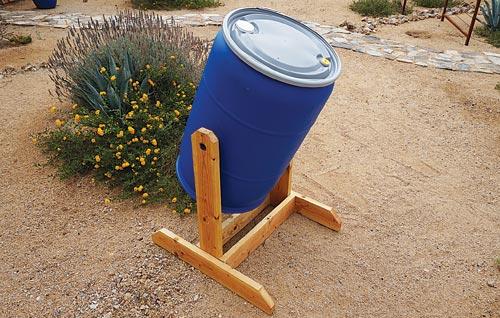
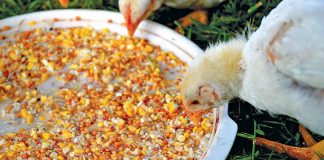






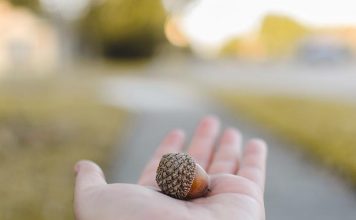
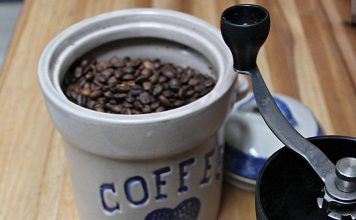


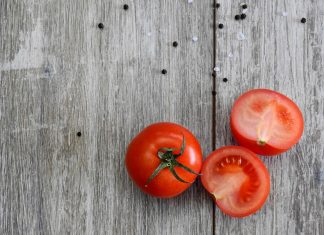
Do you cap the outside of the pvc vent pipe? If so then how does air get into the pipe?
i am in the process of building this tumbler.thank you for the great directions
Great build instructions.
Thank you!!
Any recommendations for feed stock?